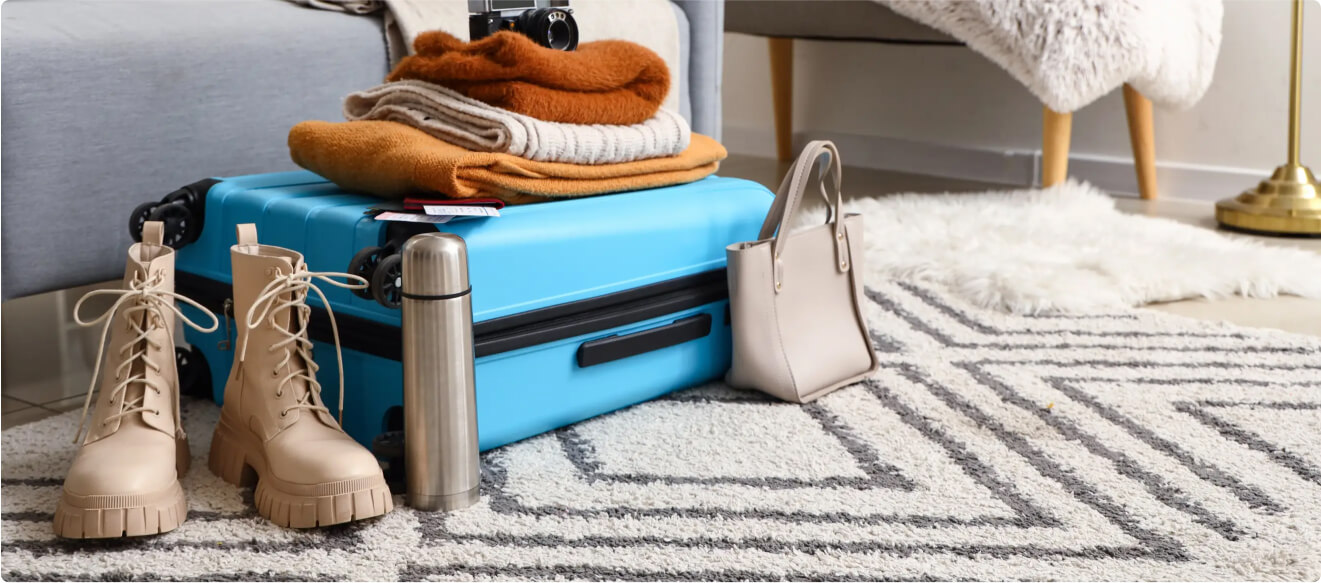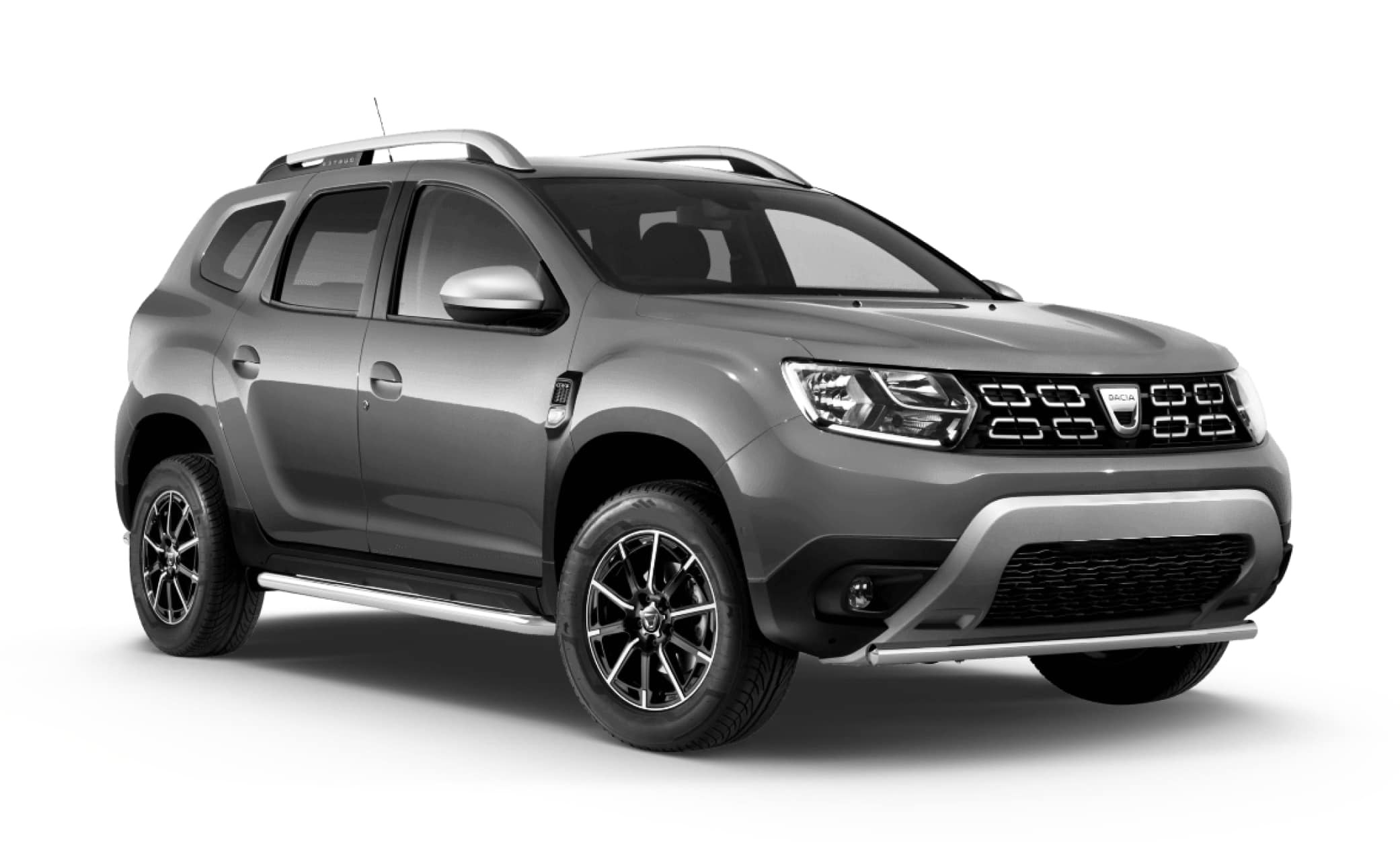Rental car sizes are confusing, to say the least, unless you have the right know-how. A standard-size car is larger than you would think, and a full-size car is smaller than an estate car. SUVs come in different sizes, and a minivan is more or less your only option if you want more than 5 people in one car.
Knowing which of the car rental sizes will be best for you is almost impossible to determine if you haven’t done the proper research, to begin with. Check out our comprehensive guide to rental car sizes to make sure you pick the right car for your trip.
What are the Different Rental Car Sizes?
Navigating the rental car landscape can feel like a jungle from time to time. First, you need to pick the right company to rent from. Then, there are a million different sizes, and some of them are not very intuitive in their name description.
“Mini” is obviously a small car, but what even is an “estate” or “intermediate”? Basically, if you’re not a car enthusiast and know all about these different sizes and names, you’re going to struggle to make a well-informed decision.
The first step in knowing which car to choose is having the rental car sizes explained. In the list below, you can see all the different car rental sizes you can come across in a car dealership:
- Mini
- Premium
- SUV
- Economy
- Standard
- Full size
- Minivan
- Compact
- Estate
- Luxury
- Intermediate/Midsize
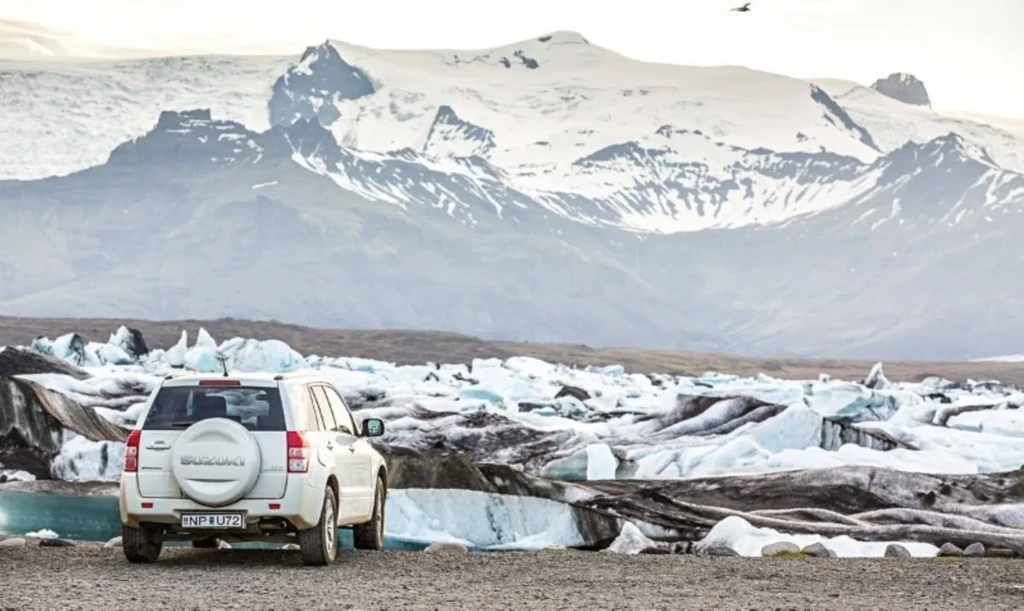
Rental Car Sizes Chart
To get a good bird's-eye view of the whole story, we’ve compiled a chart below that outlines some of the key features of the different rental car sizes. This information should be enough for you to find out which rental car sizes fits your basic needs. Later on, you can go more in-depth to decide about softer features. And maybe find out, for example, if there is a difference between American and European cars when we determine size and utility.
Instead of going through the rental car sizes from smallest to largest, we’ve chosen to do it the other way around. See, most people want a larger car for a road trip, so there’s no reason to muck about with the smaller sizes first. When renting a car in Iceland, many will also look for a 4x4 rental, which is more often than not an SUV.
|
Car size |
Passengers |
No. of doors |
Luggage capacity |
Model and brand examples |
|
Minivan |
5 - 9 |
3 |
4-5 large bags and 3 smaller bags |
Renault Trafic, Ford Tourneo |
|
SUV |
5 |
5 |
3 large bags and 2 small bags |
Dacia Duster 4x4, Suzuki Vitara 4x4 |
|
Estate |
5 |
5 |
3 large bags and 2 small bags |
Ford Focus Estate, Hyundai i30 Estate |
|
Full size |
5 |
5 |
2 large bags and 2 small bags |
Nissan X-Trail 4x4 7-seater |
|
Luxury |
5 |
2 or 5 |
2 large bags and 2 small bags |
BMW X1 4x4, Land Rover Defender 4x4 |
|
Premium |
5 |
5 |
2 large bags and 2 small bags |
Mercedes C-class, Nissan Maxima |
Car Rental Sizes Explained
Let’s get into some details about each of the models to give you an idea of what you can expect from the different rental car sizes. Here, you’ll find the answer to questions like “What is a standard-size car?” and “What is a mid-size car at the rental?”
Minivan
A minivan is simply a regular van that has been made to fit people rather than cargo. You can often rent minivans with either 5, 7, or 9-passenger seats. This is always a great option for any larger company that’s going to go on a long journey. Due to the shape and handling of the car, it’s not suitable for off-road driving, but perfect for paved roads and well-kept gravel roads.
Pros mivan
Perfect for long trips with large companies with a need for a lot of luggage space. Some minivans (often 5-seaters) will allow you to add two extra seats in the back instead of the extra luggage space.
Cons Mivan
These are notoriously difficult to handle if you don’t have the experience. They’re bulky, often not too strong (motor-wise), and with limited hind vision compared to normal cars.

SUV
An all-around favorite when you need a reliable vehicle that can handle both smooth and rough roads. SUVs are large cars with a large cargo space that are raised to give some leeway to the ground.
This makes it perfect for camping trips with the family, or as a utility vehicle when you need to transport anything. SUV stands for Sport Utility Vehicle and when it comes to rental car SUV sizes, they often come in small, intermediate, and large.
Pros SUV
Perfect for any trip where you need to bring camping gear, sports equipment, or drive in rough terrain.
Cons SUV
Not fuel-efficient at all and often quite large, so not suitable for tight spaces and often hard to drive in cities.
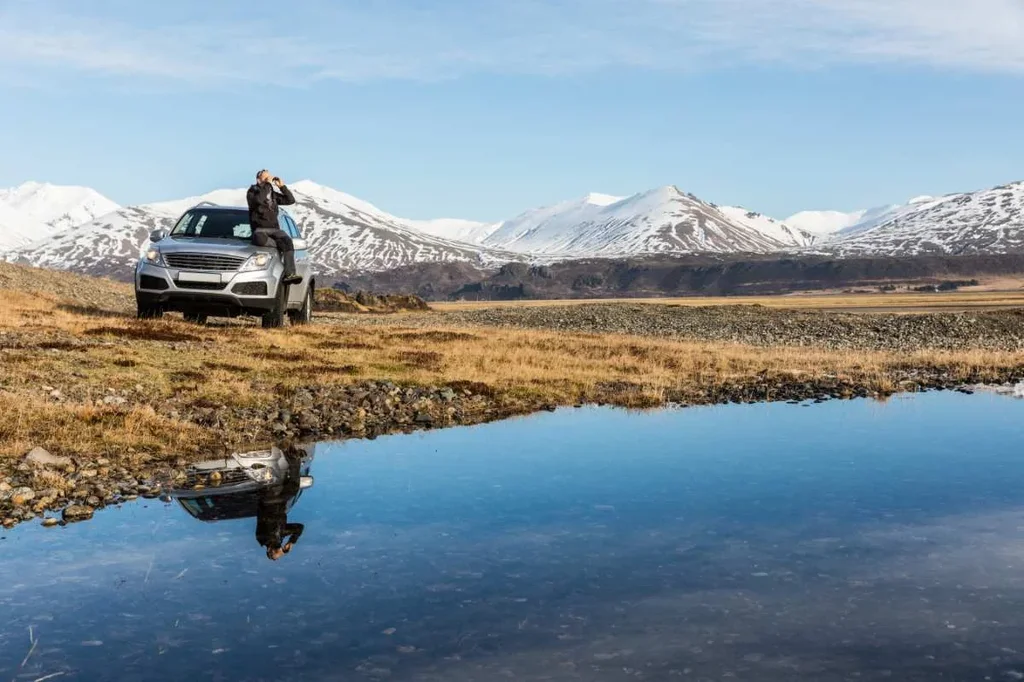
Estate
An estate can also be referred to as a station wagon. The characteristic look of an estate is that it looks like an average car with a little longer "butt". The cargo space is often quite large. An estate car will always have room for at least 5 people, often depicted with two parents in the front and three rowdy kids in the back.
This is one of the large rental car sizes that are good to pick when you are taking up to five adults on a longer trip. These cars are often spacious and comfy for people of all ages, especially if you don’t pack them to the brim.
Pros estate
Long trips with a big family or friend group are the best possible scenarios for this type of car.
Cons estate
The size of the car can be tough to handle when you need to do delicate maneuvering. Often not a part of the selection at most car dealerships.
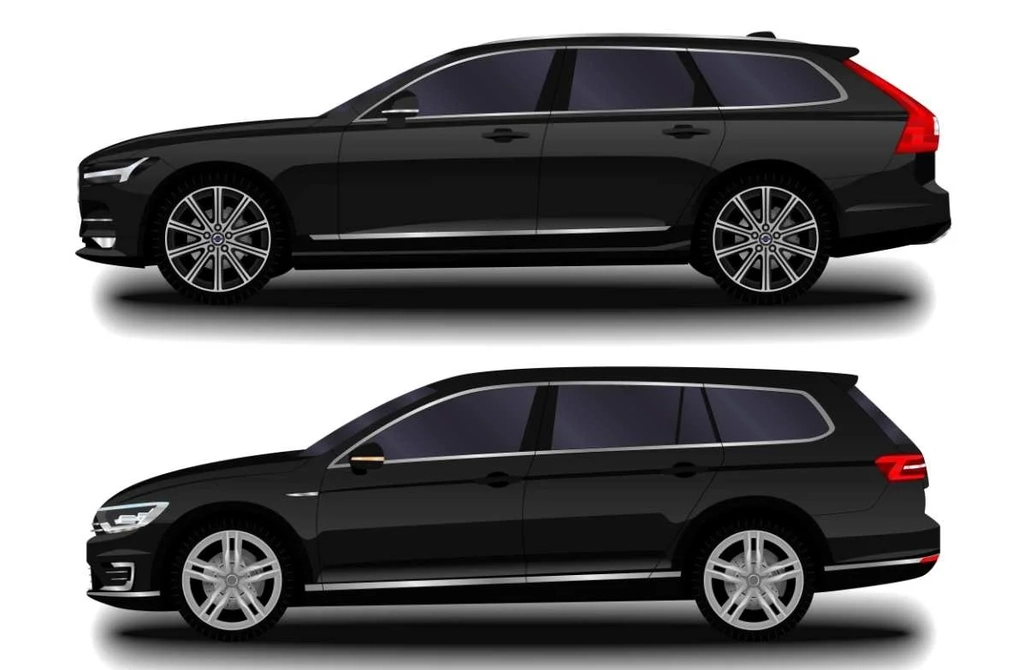
Full Size
This is the second-largest size of a car, with a slightly smaller cargo space than the estate, but still larger than the other cars. This is the most common of the large rental car sizes. It will often be the last possibility before you have to get either a minivan or an SUV if you want more interior space.
Pros full size
Plenty of space for both people and luggage.
Cons full size
Often not the most fuel-efficient car.
Luxury
Imagine the size of a regular 5-seat car, but more luxurious.Luxury rental cars often come with a higher price, but also include a bunch of added features, ranging from AC in the back, to built-in screens and sometimes even Wi-Fi. Space, legroom, and very comfortable seats are often the main selling point. That, alongside a well-built entertainment system and pristine climate control. It can come in 2- or 5-seater models, meaning that they are often either small or standard-sized.
Pros luxury
You will have the highest levels of comfort and a feeling of being pampered by a car.
Cons luxury
Price. If you go for a luxury car, you will have to pay a luxury price. These cars are never made to be an economic alternative to any other car model.
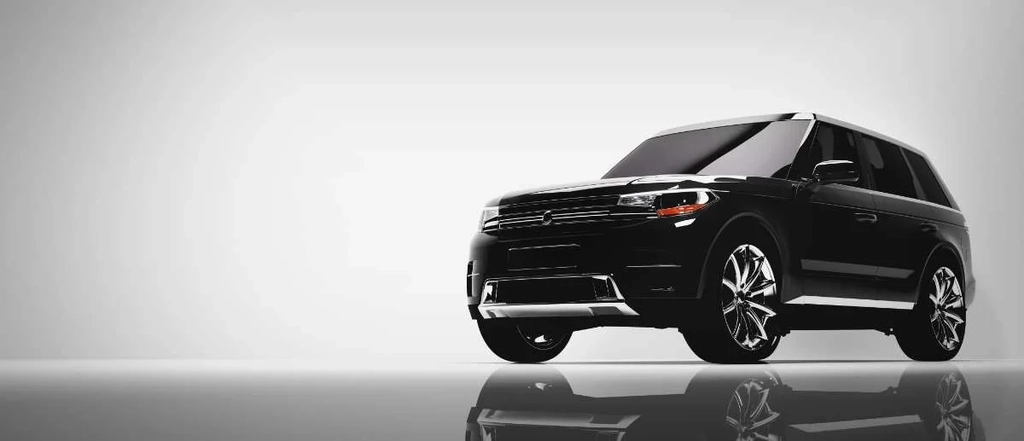
Premium
The step-down between the luxury and the regular car will be the premium car. With a premium car, you will still be able to enjoy a way smoother ride than most standard cars, but you won’t have to dig as deep in your pockets to afford it.
Most premium cars will seat up to 5 people and have a cargo space that can fit 2 large bags as well as two smaller bags. You could probably squeeze in 3 large bags, but then you won’t have any space for smaller bags.
Pros premium
This is the budget alternative to a luxurious car. You will have most of the comforts that many standard cars don’t have, so any ride will be a pleasure.
Cons premium
This is still a pricey car with limited cargo space. You pay for personal luxury, not extra space.
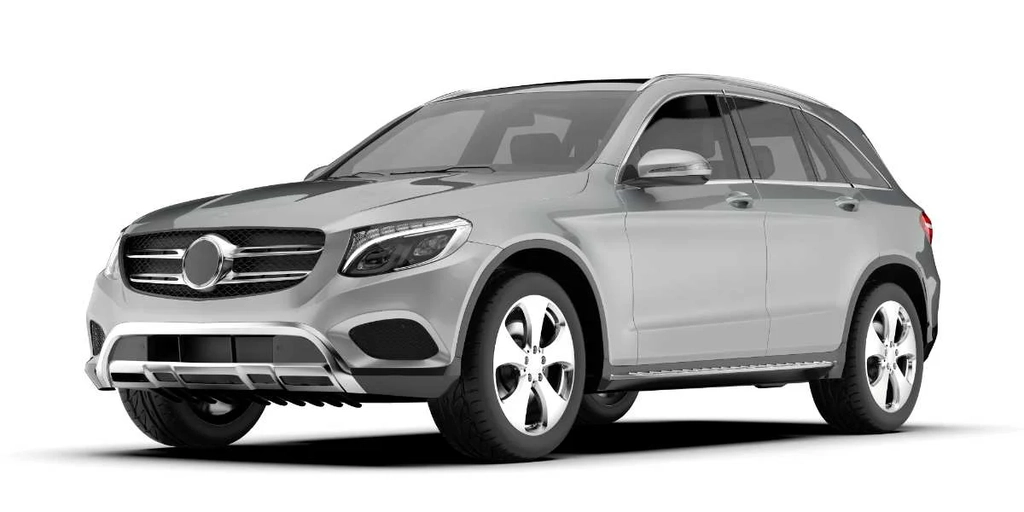
Standard
This is one of the most popular car rental sizes for any long road trip, since it fits most of what you need, while also being somewhat fuel-efficient. This is best suited for no more than four people on a longer trip and up to five people on a shorter trip. Some standard rental car examples are Ford Focus and Peugeot 101.
Pros standard
Great compromise in terms of size and price.
Cons standard
Packing smart is key to maximizing the use of this car rental type.
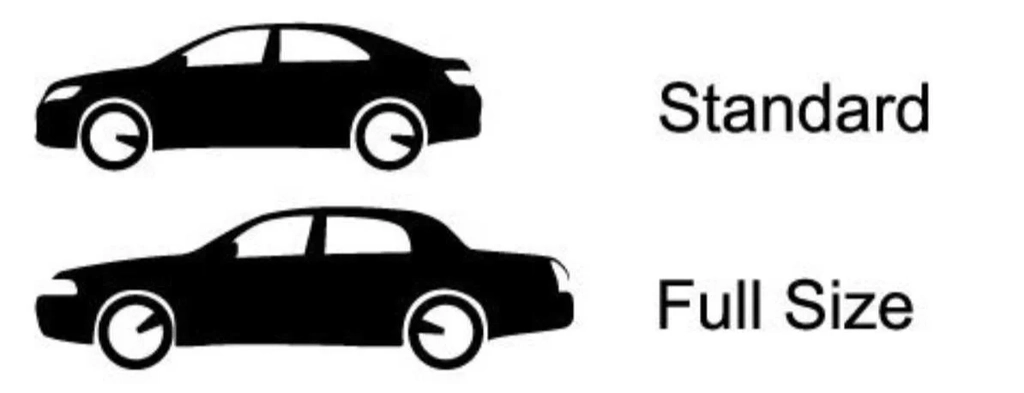
Intermediate or Mid-sized
If you are in a company that doesn’t pack that much, this is the perfect car. You will be able to comfortably fit up to four people, but the luggage space will be limited. That makes this type of car better suited for 2 people on a long trip, or four people for shorter trips.
Pros intermediate or mid-sized
Easy to maneuver due to the size and often fuel-efficient.
Cons intermediate or mid-sized
Smaller than the average.
Compact
Right between the economy and standard car, we find the compromise of compromises. A compact-sized car will be perfect for you if you know you are going to go on a longer trip with no more than three people. For shorter trips, this is fine for up to five people, but then we’re talking about trips no longer than an hour or so.
Pros compact
If you don’t carry that much luggage, this car might be a great alternative for you.
Cons compact
This might be a compromise you don’t want to do if you are planning a longer trip with more than 2-3 people.
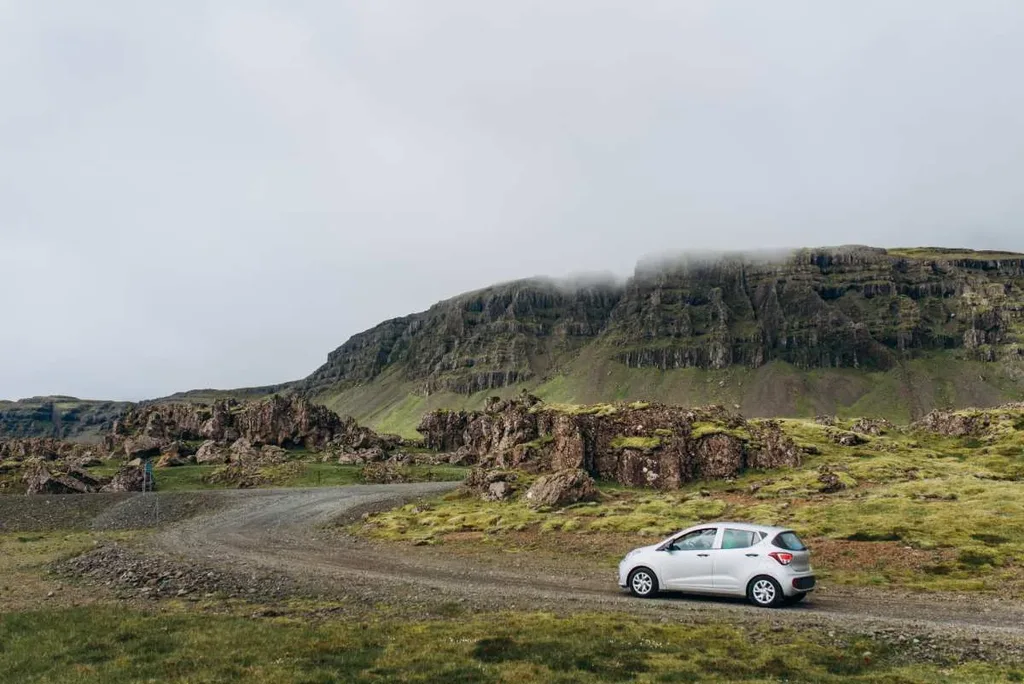
Economy
Just like the name suggests, the economy class is for those who are looking for an economic alternative. This category will help save on the travel costs of the holiday. This is the second-smallest car and is not suitable for more than two people if you want to have any significant luggage in the car.
Pros economy
Perfect for a couple on a road trip on a budget.
Cons economy
These are often cramped and rarely have a strong engine. Some models don’t have a pair of back doors.
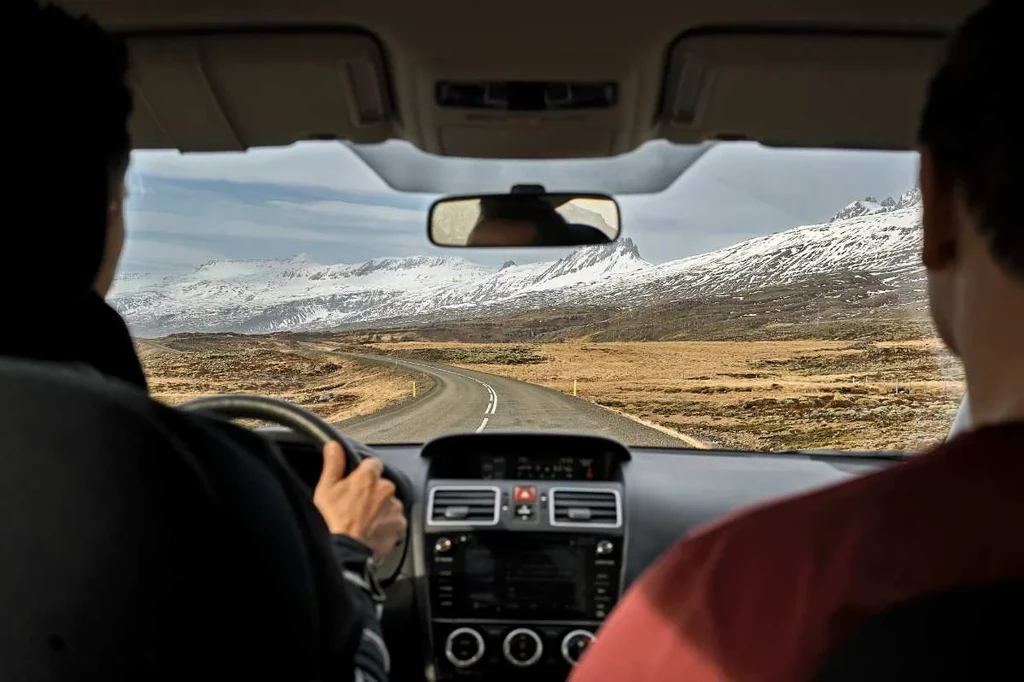
Mini
If you are two people with very little luggage, this is the best alternative for you. This is the absolute smallest car rental size you could find at any rental place and should probably not be used on a longer road trip. It’s perfect for driving in the city, like in Reykjavik.
Pros mini
The most fuel-efficient car, which is also easy to maneuver in tight spaces.
Cons mini
Not even remotely suitable for longer trips as they are made for short trips.
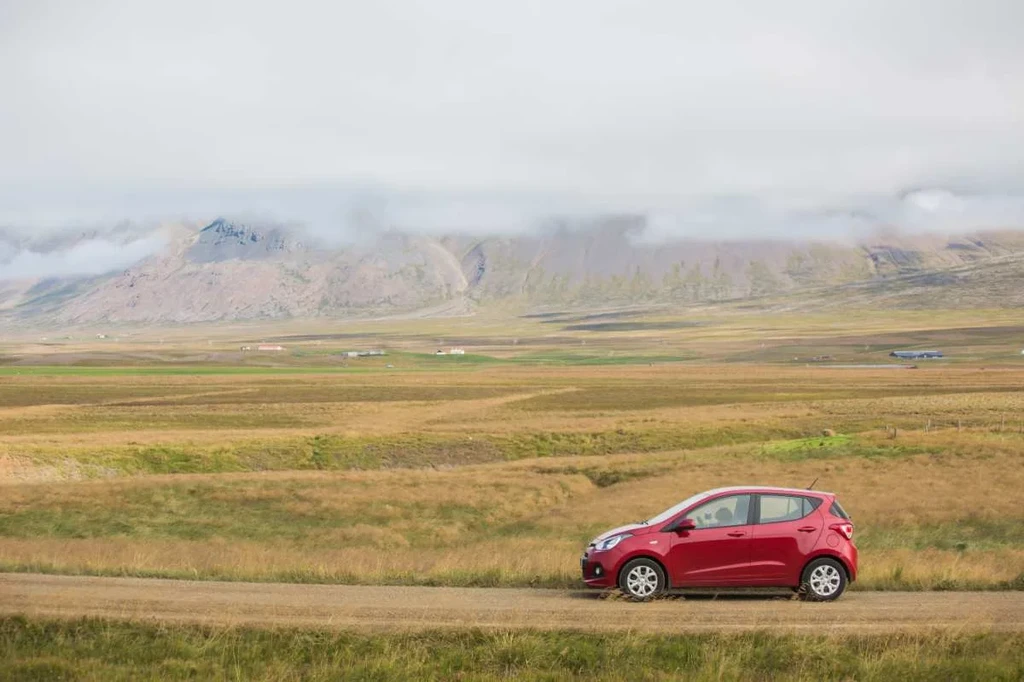
Find the Right Fit for Your Trip
Knowing the qualities of the different rental car sizes will not be enough to make an informed decision. In this section, we’ll provide you with a car rental sizes guide that puts the different sizes up against each other.
This way, you'll know which is the best suitable for which situation. Here, we’ll answer questions like “which is bigger, a full-size or standard car?” and “Which is best for a family holiday, standard or midsize?”







